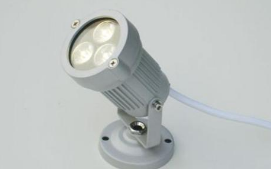Customization Wire,Electronic Wire,2 Core Power Cable,2 Core Electrical Cable ShenZhen Puchen Electronics Co., Ltd. , https://www.szpuchen.com
LED spotlight light cup is broken, how to do it
In many modern homes, lighting goes beyond just illumination. Spotlights—especially those mounted on the ceiling near the TV wall—are commonly used to highlight specific areas or objects. However, if these LED spotlights start flickering or lose brightness, it can be a source of frustration. The good news is that replacing an LED spotlight bulb is not as complicated as it might seem. With the right approach, you can do it yourself without needing to hire a professional, saving both time and money.
To begin, make sure to turn off the power switch of the spotlight to ensure safety. Next, use a flat-blade screwdriver to gently remove the outer ring. Once the cover is off, the entire unit should come out easily. After replacing the bulb, reposition the lamp by tilting it slightly before securing it back in place. If you need replacement parts, check with the seller’s after-sales service, as most LED products come with at least a two-year warranty.

**Problem Analysis:**
A common issue occurs with 3W MR16 LED (12V, regulated input) spotlights connected to a switching power supply (12V/2.5A). These systems typically power 6–8 spotlights, but after several months of use, some may start flickering. Additionally, the switching power supplies may become excessively hot (over 60°C), even when placed in well-ventilated areas. Testing shows normal input and output voltages, but when the LED flickers, the power supply stops delivering current.
**Possible Cause:**
Low-voltage LED spotlights are designed for use with M16 or M11 lamp cups and are usually connected directly to halogen transformers. However, these transformers are specifically designed for halogen lamps and are not suitable for powering LED drivers. When three LEDs are connected in series to a halogen transformer, two main issues arise: no light or low-frequency flickering.
The rated voltage for low-voltage halogen lamps is 12V, but the electronic transformer outputs slightly less—typically around 11.3–11.5V—to extend the lifespan of the halogen bulb. On the other hand, standard LED drivers require a minimum differential voltage of 0.3V to operate correctly. If the total forward voltage of three LEDs (around 10.2V) plus the Schottky bridge voltage drop (about 1V) exceeds the available input voltage, the driver will not function properly, and the LED won’t light up.
As shown in the diagram, when a three-LED buck driver is connected to a transformer output of 11.3V, the actual output voltage is only around 10V, which is insufficient to power the LEDs in series.
**How to Choose the Right Spotlights:**
Spotlights are generally divided into low-voltage and high-voltage types. For better performance and longer lifespan, it's recommended to choose low-voltage spotlights. The quality of the light is often determined by the power factor—higher values mean better efficiency. While standard spotlights have a power factor of about 0.5, high-quality models can reach up to 0.99, although they tend to be more expensive.
Spotlights are often used to illuminate decorative elements, such as artwork or architectural features, and are typically installed in ceilings or walls. Since they generate heat during operation, it’s crucial to invest in high-quality products to avoid potential safety risks. Always pair your spotlight with a compatible transformer and ensure the LED beads are of good quality. Replacing a ceiling-mounted spotlight can be quite inconvenient, so choosing reliable products from trusted brands is always a wise decision.